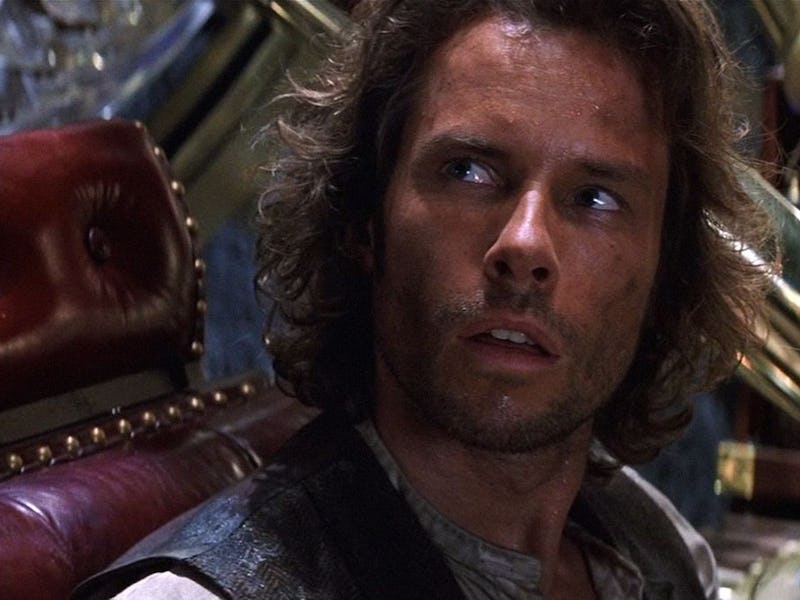You need to watch the best time-travel movie on Paramount+ ASAP
The second theatrical adaptation of H.G. Wells masterpiece is overdue for a reappraisal.

Time travel is one of science fiction’s most enduring notions. As explored in everything from genre classics like Planet of the Apes and The Terminator to recent comic-book blockbusters like Zack Snyder’s Justice League and Marvel’s on-going Loki series, we’ve long been obsessed with the idea of rewriting the past to change the future. But where did this fascination begin?
While it’s difficult to determine who penned the very first-time travel story, one of the founding fathers of science fiction is credited with popularizing the concept. H.G. Wells, also known for The War of the Worlds and The Island of Doctor Moreau, even coined the term “time machine,” in his famous 1895 novella named for the device.
Though a seminal work of science fiction that was first published over 100 years ago, Wells’ The Time Machine has only been adapted twice as a theatrical feature film. First came MGM’s George Pal-directed feature in 1960. But more recently, in 2002, Warner Bros and DreamWorks came together to revisit the material with director Simon Wells, the legendary author’s own great-grandson. It’s this latter Time Machine, currently streaming, that deserves your attention as an underrated modern cult classic.
Pal’s well-regarded sci-fi picture won Oscars when it was first released but is generally regarded as a cut above its B-movie contemporaries rather than a true grade-A classic. Wells’ film, meanwhile, earned mixed-to-negative reviews and arrived in theaters as a big-budget spectacle plagued by behind-the-scenes issues.
2002’s The Time Machine.
Set in 1899, Wells’ The Time Machine follows Dr. Alexander Hartdegen (Guy Pearce), who builds a time machine after his fiancée is killed by muggers. Traveling back in time to save her, he’s only successful in watching her die again, under different circumstances. Unable to change the past with the technology at his disposal, he instead travels to the years 2030 and 2037. With the help of a holographic AI named Vox 114 (Orlando Jones), Hartdegen looks to somehow overcome the determinism that seems to grip his life.
His search for answers leads to disaster when the Earth’s gravitational fluctuations, caused by the moon’s destruction, set off an earthquake that damages Hartdegen’s time machine and sends him to the year 802,701.
It’s at this point that The Time Machine begins to hew closer to Wells’ source material, as Hartdegen encounters the peaceful and primitive Eloi. One of these humanoid creatures, Mara (Samantha Mumba), retains some grasp of the English language, though the rest of the species has lost the ability to speak it, and Hartdegen learns that the Eloi are being hunted by some unseen presence. Regrouping with Vox 114, he learns that humanity has diverged down two evolutionary paths, with the peaceful Eloi living above ground in elaborate treehouses and the underground-dwelling Morlocks preying on the Eloi. The Morlocks are led by the aptly titled Über-Morlock (Jeremy Irons), whose telepathic powers keep the Eloi in a primitive state.
2002’s The Time Machine.
Once Mara is captured, Hartdegen must do everything in his power to save her, an effort that ends up being far more action-packed than both the 1960 film and Wells’ original story. The Time Machine delivers in terms of visual style, and the makeup effects on the Morlocks, which received an Academy Award nomination, are truly haunting. This author saw the film in theaters at age 12; the visual sensibilities of the film has stuck with me since. So why was The Time Machine received so negatively at the time of its release?
Mainly, one senses the bad reviews have a lot to do with how much ground The Time Machine attempts to cover throughout a relatively short runtime. This is a 96-minute movie that desperately needed to be at least two hours. Its director, previously best known for directing animated features An American Tail: Fievel Goes West, We're Back! A Dinosaur's Story, Balto, and The Prince of Egypt, may have employed a kind of narrative shorthand that worked for animation but doesn’t translate to live-action. That said, his background is surely also responsible for the film’s visual spectacle.
Screenwriter John Logan, just coming off Gladiator at the time, makes all the right additions to Wells’ original story in order to appeal to modern audiences, including a romantic subplot and a central antagonist. Even the plentiful exposition delivered by Vox 114 is enjoyable, though there’s admittedly not enough time between scenes for all the characters to breathe. It’s a shame The Time Machine isn’t longer, because Pearce shines as a turn-of-the-century swashbuckler, and there’s a lot of material for him to work with in terms of fate, loss, and Hartdegen’s debate over whether to dwell on the past or triumph in the future.
2002’s The Time Machine.
One of the more interesting bits of trivia about The Time Machine is that its final 18 days of shooting were overseen by Gore Verbinski, after Wells left the set due to extreme exhaustion. Verbinkski’s fingerprints are visible on the film, and while there’s been no confirmation of how much footage is his, Hartdegen’s confrontation with the Morlocks in the third act conspicuously features his visual flair. His last-minute collaboration with Logan may have sowed seeds for their future partnership on the Oscar-winning 2011 animated feature Rango.
Despite the film’s setbacks, The Time Machine is never anything less than entertaining, and its visuals leave an impression. If there’s anything holding The Time Machine back from achieving greatness, ironically, it’s that the film takes on a highly ambitious storyline and, with just an hour and a half to move through it, runs out of time.
The Time Machine is currently streaming on Paramount+.
This article was originally published on